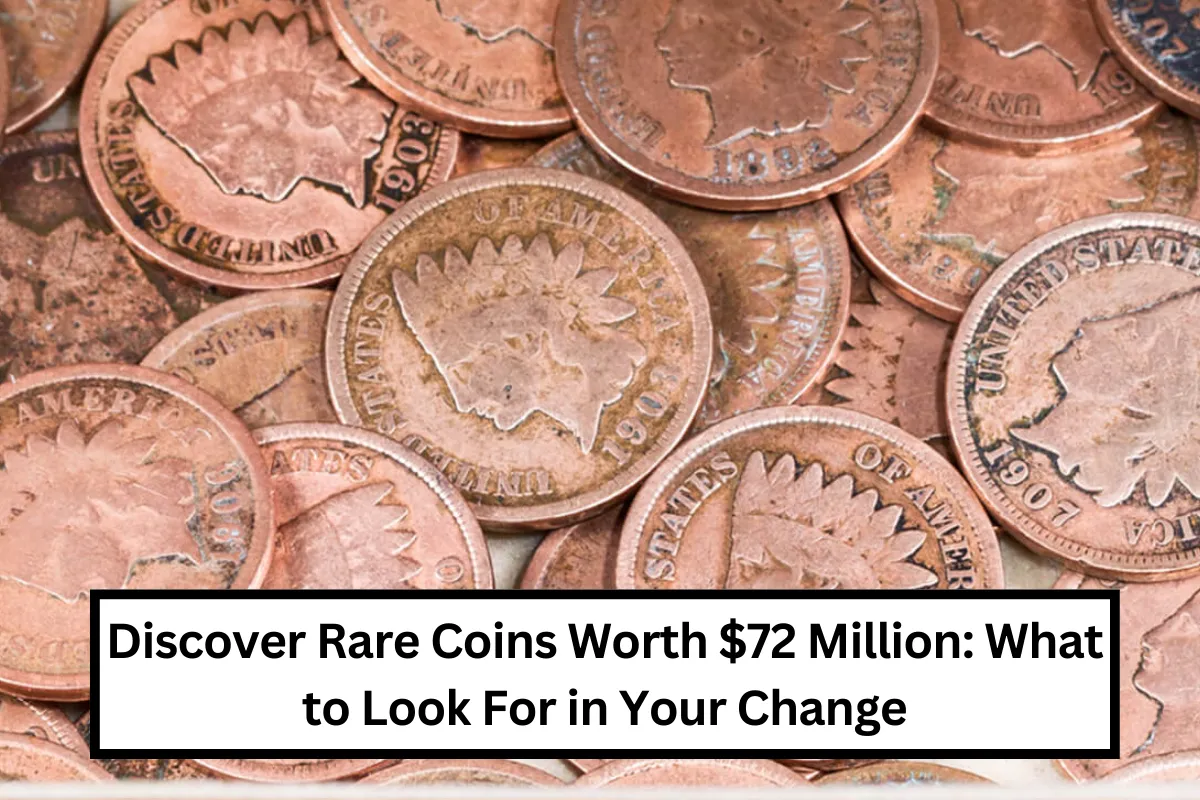Coin collecting can be a thrilling hobby, especially when you discover coins worth a fortune! Imagine finding a dime or quarter in your change worth $72 million.
It might sound unbelievable, but some rare dimes and a special Bicentennial quarter are still out there. In this article, we will explore these valuable coins and give you tips on how to spot them.
The Legacy of Rare Coins

The United States Mint has made billions of coins, but only a few are incredibly rare due to errors or special characteristics. These rare coins are often highly valuable because they are hard to find and have interesting histories.
The Eight Rare Dimes
Here are the eight rare dimes that collectors dream of finding. Each of these dimes is famous for its unique features or errors.
| Coin Name | Year | Mint Mark | Key Feature | Estimated Value |
|---|---|---|---|---|
| 1894-S Barber Dime | 1894 | S | Limited mintage (24 coins) | $72 million |
| 1916-D Mercury Dime | 1916 | D | First-year issue, low mintage | $72 million |
| 1942/41 Mercury Dime (D) | 1942 | D | Overdate error | $72 million |
| 1942/41 Mercury Dime (P) | 1942 | P | Overdate error | $72 million |
| 1919-S Full Bands Mercury Dime | 1919 | S | Full Bands on reverse, rarity | $72 million |
| 1968-S No-S Roosevelt Dime | 1968 | S | Missing mint mark | $72 million |
| 1975 No-S Roosevelt Dime | 1975 | S | Missing mint mark, proof coin | $72 million |
| 1982 No-Mint Mark Roosevelt Dime | 1982 | – | Missing mint mark, circulation coin | $72 million |
Detailed Analysis of Each Rare Dime
1894-S Barber Dime

The 1894-S Barber Dime is one of the most famous rare coins. Only 24 were made, and about 9 are known to exist. This coin was made as a special gift, making it extremely valuable.
1916-D Mercury Dime
As the first year of the Mercury dime series, the 1916-D is very rare due to its low mintage. Only 264,000 were made, so it’s highly sought after by collectors.
1942/41 Mercury Dime (D and P)

These dimes are famous for having the year “1942” struck over “1941.” This error happened at both the Denver (D) and Philadelphia (P) mints, making them valuable.
1919-S Full Bands Mercury Dime
The 1919-S is special when it has “Full Bands” on the reverse. This feature shows the coin was fully struck, making it rare and desirable.
1968-S No-S Roosevelt Dime
This coin was made as a proof coin for collectors but was mistakenly struck without a mint mark. Only a few exist, adding to its value.
1975 No-S Roosevelt Dime

Another proof coin, the 1975 No-S Roosevelt Dime, was also struck without a mint mark. This error is very rare, making the coin highly valuable.
1982 No-Mint Mark Roosevelt Dime
Unlike the previous no-mint mark dimes, the 1982 dime was struck for general circulation. The missing mint mark was a mistake, making it rare and valuable.
The Ancient Bicentennial Quarter
In addition to these dimes, there is also a rare Bicentennial quarter worth $72 million. Minted in 1976 to celebrate America’s 200th birthday, this quarter has a minting error that is still not fully explained.
| Coin Name | Year | Mint Mark | Key Feature | Estimated Value |
|---|---|---|---|---|
| Bicentennial Quarter | 1976 | – | Minting error (unverified) | $72 million |
Why These Coins Are Still in Circulation
These rare coins are still out there because they were released to the public and might have mixed with regular currency. Many of these coins have been overlooked, so they could be hiding in your change, a drawer, or an old collection.
How to Identify and Authenticate Rare Coins
If you think you have found one of these rare coins, here’s how to identify and authenticate it:
- Check Key Features: Look for specific mint marks, dates, and any known errors.
- Compare Weight and Diameter: Real coins have precise specifications.
- Consult a Professional: Have your coin graded by a reputable service like PCGS or NGC to confirm its authenticity and value.
Market Value and Future Trends
The value of these rare coins has been increasing due to their rarity and collector demand. The market for rare coins is strong, with many willing to pay top prices. As more people learn about these coins, their values might keep rising.
1. How can I tell if my dime is one of the rare ones?
Check for specific mint marks, dates, and known errors. Compare your coin’s weight and diameter with standard specifications.
2. Why are these coins so valuable?
These coins are rare due to errors, limited production, or unique features. Their scarcity and historical significance make them highly valuable.
3. Where can I find these rare coins?
These coins might be in your pocket change or old collections. They were released to the public and could be mixed with regular currency.
4. How can I get my coin authenticated?
Consult a professional grading service like PCGS or NGC. They can verify your coin’s authenticity and determine its value.
5. Are these rare coins still being found today?
Yes, people still discover these rare coins. Their value and rarity mean that collectors and enthusiasts continue to search for them.










